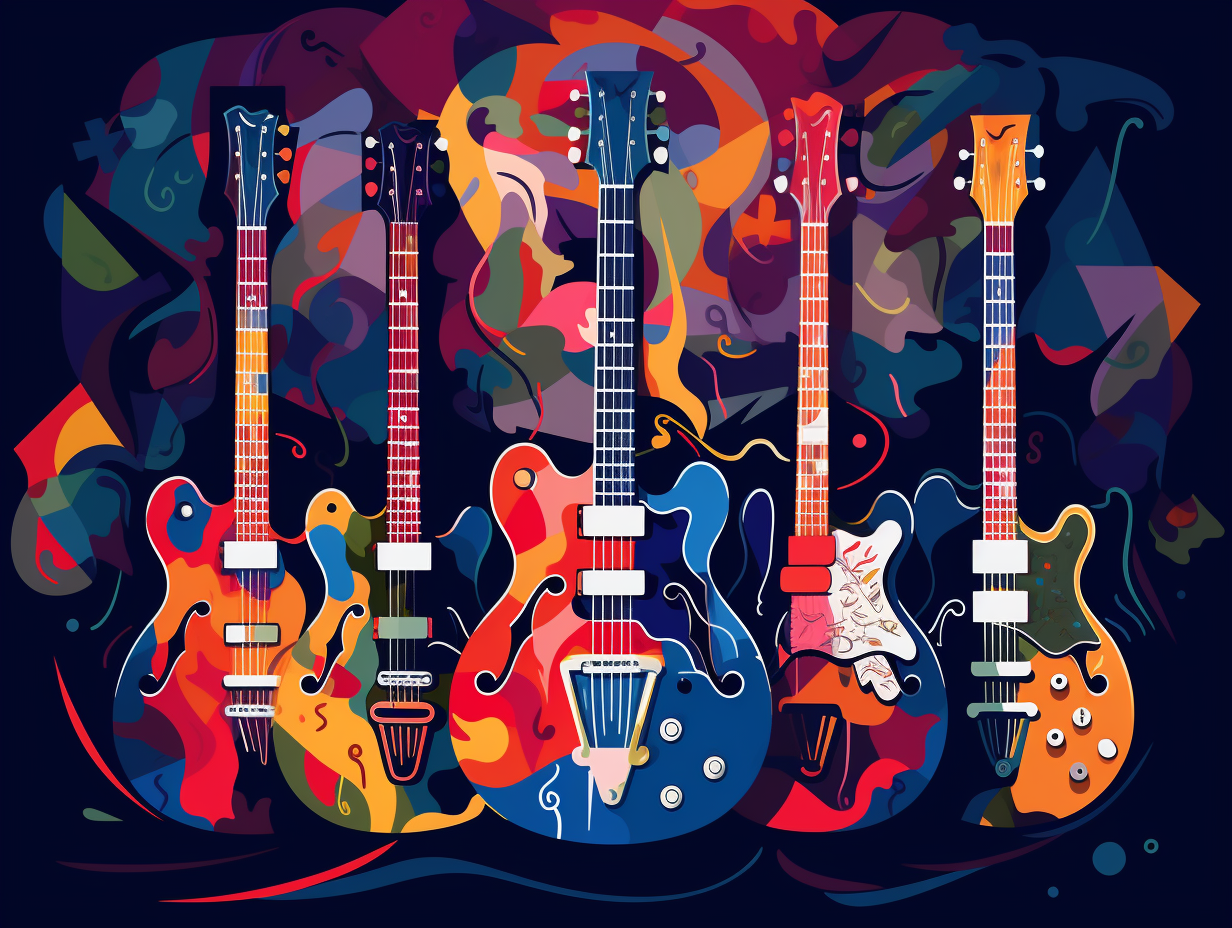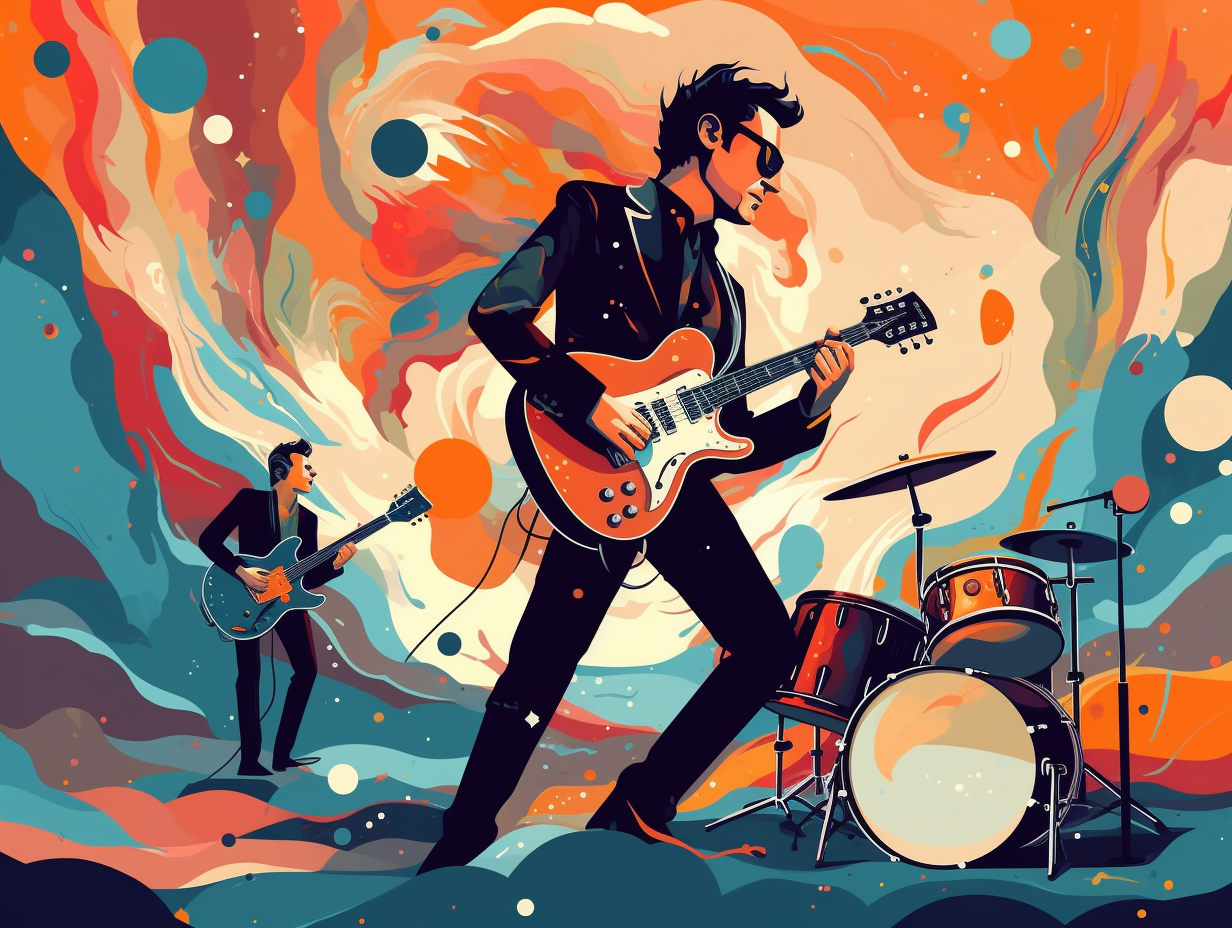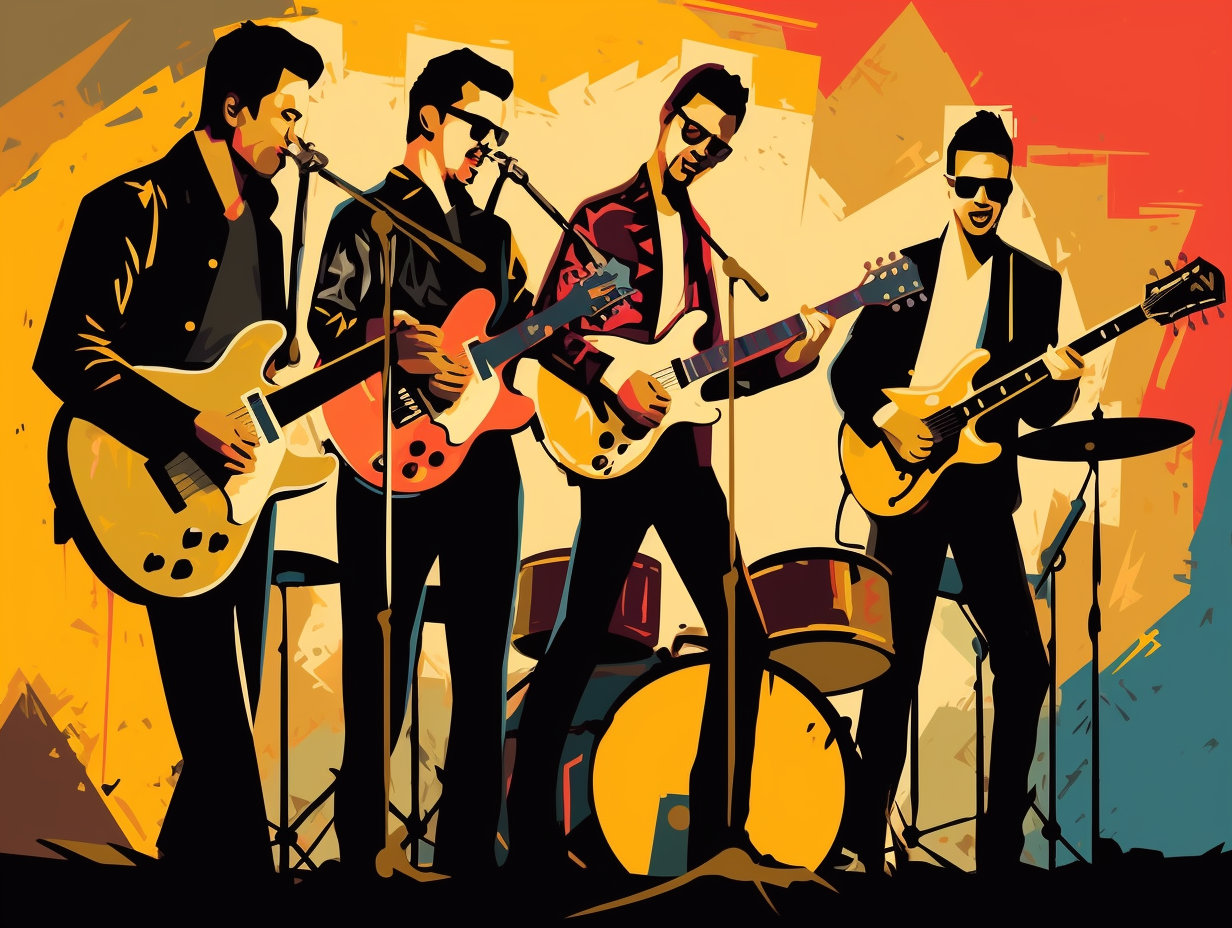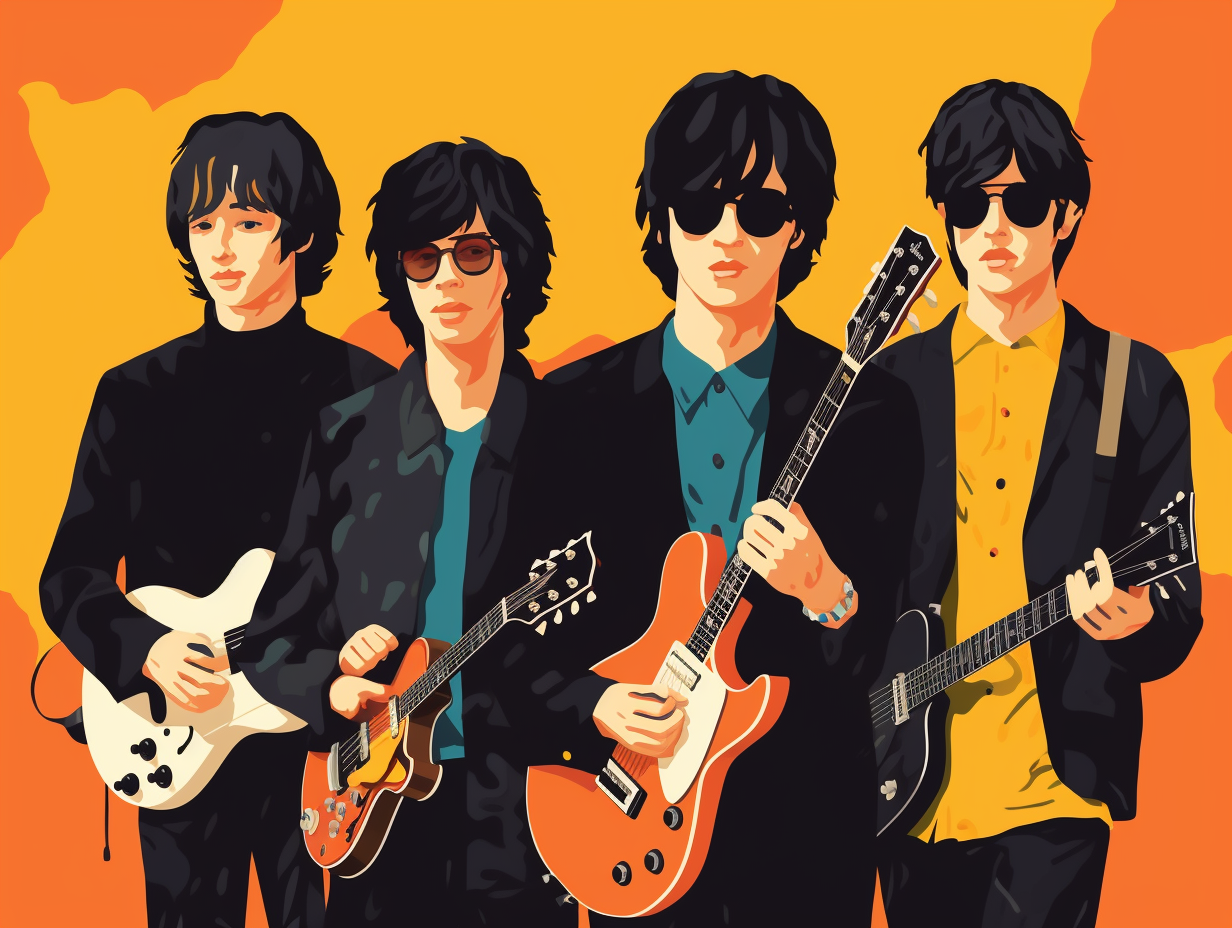Strum Your Way to Knowledge: 12 Entertaining Fun Facts About Acoustic Guitars
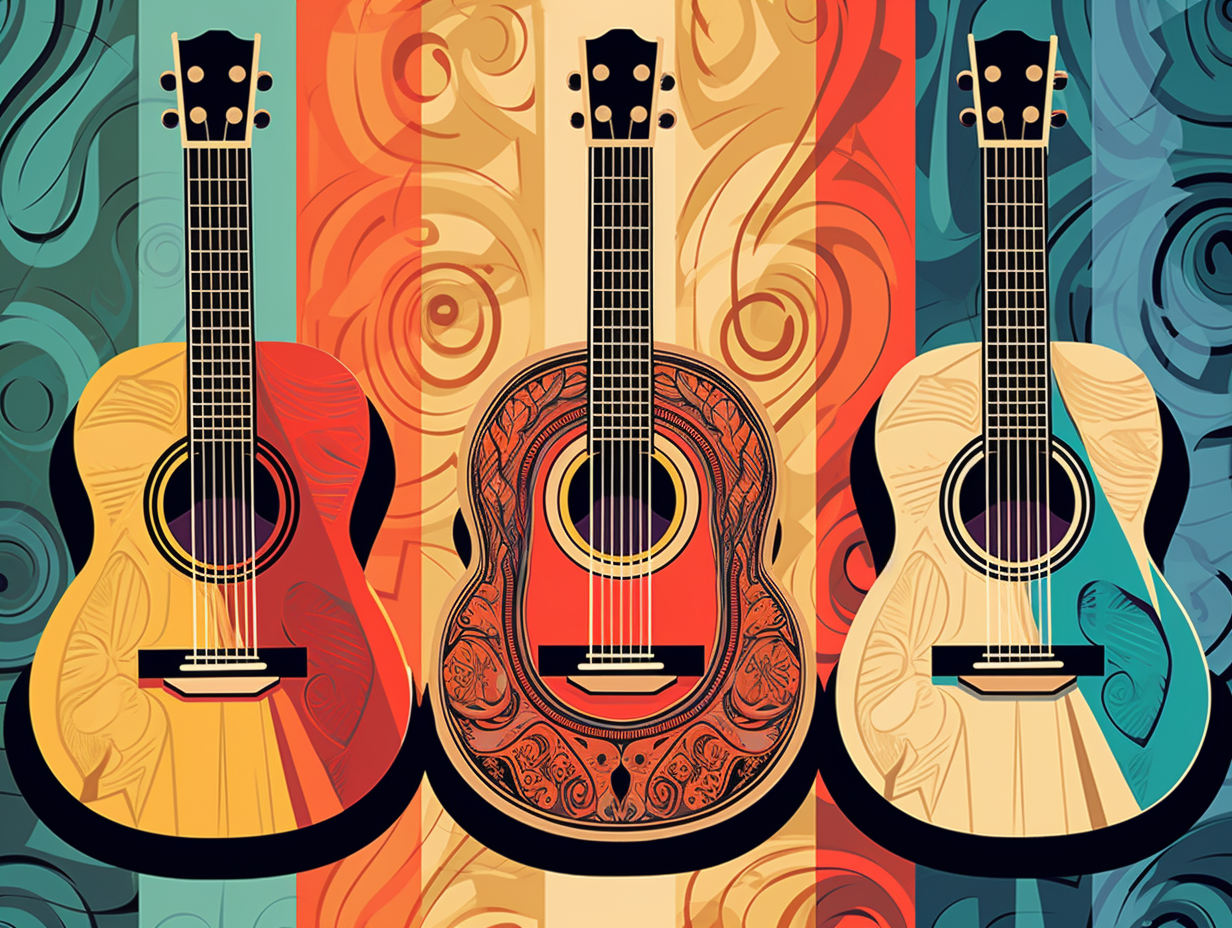
1. Frankenstein Pickups
Ever felt like Dr. Frankenstein, eager to electrify your beloved six-stringed acoustic monster? Hold onto your electrodes: Adding a pickup to an acoustic guitar amplifies its sound but can compromise its natural tone. Different pickup types can enhance or detract from the music, and proper installation is vital to avoid damage or string transmission issues. Remember, simply zapping your acoustic with a pickup won't magically turn it into an electric – they're two distinct creatures in the guitar world.
Source => fuelrocks.com
2. Lennon-Bunyan Jam
If John Lennon and Paul Bunyan were to jam around a campfire, they'd be strumming on this beauty: The Martin D-28 John Lennon Sitka Spruce/Rosewood Dreadnought acoustic guitar, top-seller in its market for its enchanting natural finish, rosewood back, solid spruce top, and ebony fretboard and mahogany neck contribute to unparalleled tone and playability, all handcrafted in the United States.
Source => reverb.com
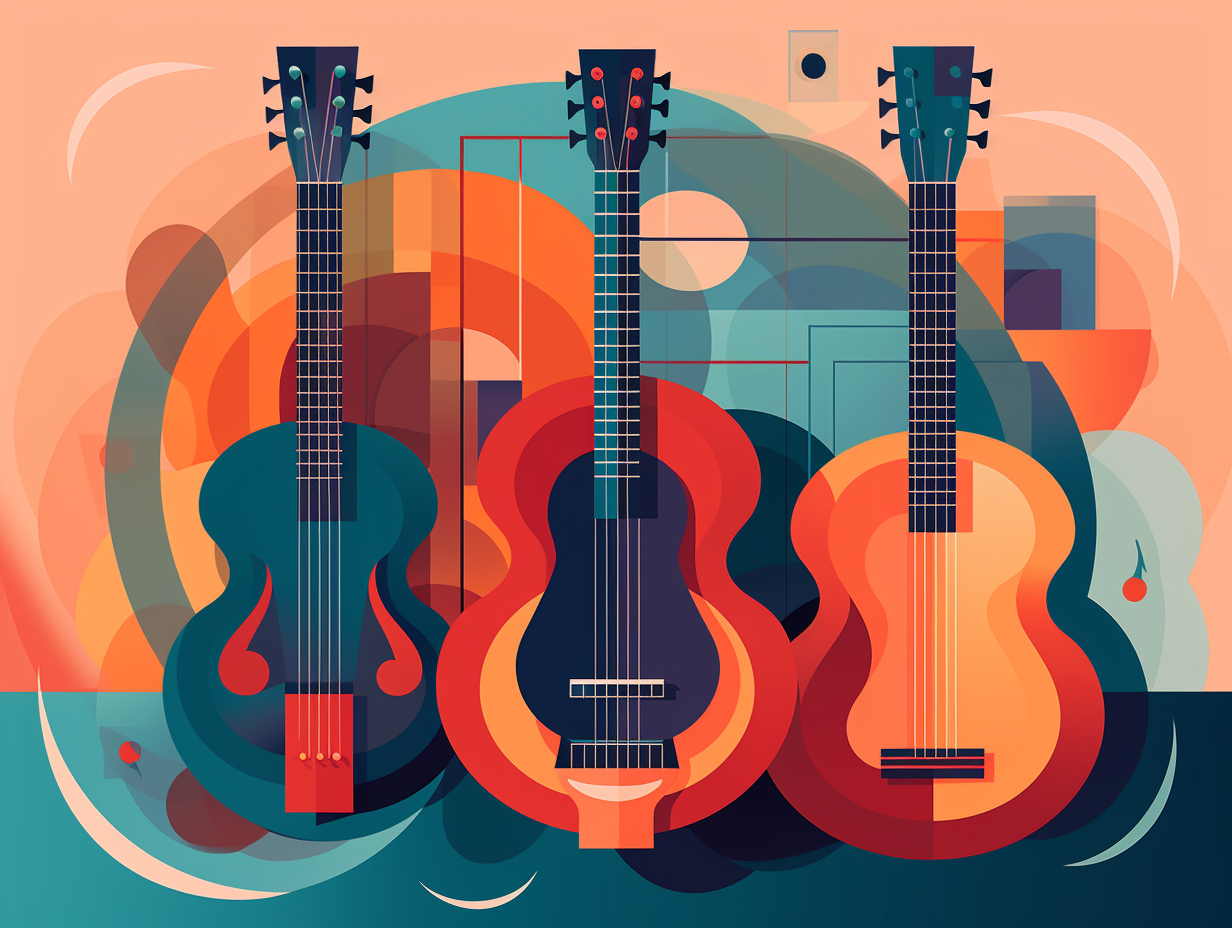
Did you know early guitar strings weren't made from cats? Discover the surprising animal sources behind these high-quality gut strings, still adored by musicians today! 🎸🐑🐄
=> Fun Facts about Guitars
3. Gutsy Strings
You've heard of air guitar, but have you ever met a string section with serious guts? Those who grunt for strings with history: Early guitar strings, known as catgut strings, were crafted from the intestines of lambs or bulls. Although prone to drying out and becoming brittle, these strings still charm some acoustic players for their vintage sound. Contrary to their feline name, no cats were harmed in the making of these gutty strings, which are often identified by their distinct yellow hue, and are still available for purchase today.
Source => professorstring.com
4. X-factor Guitar Hero
Once upon a time in a land of strum and pickin', there was a guitar hero whose X-factor changed music forever: Enter Christian Frederick Martin, who in the 1830s, developed the modern flat top acoustic guitar with X-braced design, tolerating steel strings and a picking technique, steering away from the feeble fan braced Spanish guitars, and thus creating a guitar revolution!
Source => stringjoy.com

5. Acoustic Fever Pitch
As strumming crescendos reached a fever pitch and everyone's inner bard emerged from the metaphorical sound hole: global acoustic guitar sales increased by 15% from 2019 to 2020, leading to 2.7 million guitars sold in the US alone, and famous guitar brands like Fender and Gibson reported record sales with Fender stating that sales of their guitars priced under $500 increased by an astonishing 92% during 2020.
Source => musicstrive.com
6. Parlor Guitar Mystery
When parlors had parties, ladies weren't left fretting: The parlor guitar, with its compact size, wasn't actually designed for female players in their sitting rooms. Hailing from the late 1800s to early 1900s, this petite instrument owes its ancestry to lutes and other historical stringed counterparts, boasting steel strings and a fine European design.
Source => medium.com
7. Hulk Hogan Martin Guitars
From strumming tunes by the campfire to unplugging the ultimate MTV sessions, Martin guitars have always rocked the world like Hulk Hogan power slamming Andre the Giant: These legendary six-string wonders have been around since 1833, and the hands of music gods like Hank Williams, Elvis Presley, John Lennon, and Neil Young have graced their fretboards, propelling them to iconic status in musical history.
Source => martinguitar.com
8. Acoustic-Classical Sibling Rivalry
If an acoustic guitar and a classical guitar were siblings, they'd be the type to hilariously argue over who wore it better while sporting the same outfit, yet insisting they have completely different styles: In reality, acoustic guitars use steel strings, giving them a bright and resonant sound, while classical guitars use nylon strings and have a wider neck and different bridge structure.
Source => blog.ernieball.com
9. MTV Martin Rescue
When MTV went on an unplugged binge and musicians scrambled for an acoustic crutch, it was Martin guitars that swooped in as the unsung hero, soothing those electric-souled stars: Martin guitars not only provided instruments for acoustic-deprived artists on MTV Unplugged, but the show's success created a resurgence in their popularity, leading to iconic performances by Eric Clapton, Nirvana, and even a special MTV Unplugged Martin guitar model, blending the dark warmth of mahogany with the rich dynamics of rosewood.
Source => thaliacapos.com

10. Cordoba Nut Width
Grasp your nuts, guitar fans, because this one's a mouthful: The Cordoba C10 and C12 classical guitars boast a whopping 2.04-inch nut width, making them some of the widest six-stringer bad boys in town – all while maintaining their A-game in comfort and playability.
Source => fuelrocks.com
11. Zeppelin's Stairway to Drum Heaven
What do you get when you mix Led Zeppelin, an old English workhouse, and a pinch of acoustic magic? A stairway to drum heaven, of course! The serious reveal: At Headley Grange in Hampshire, England, the band recorded parts of their classic albums, such as Led Zeppelin III and IV, and experimented with production techniques like capturing John Bonham's drum parts in the entrance hall, leading to the iconic drum sound in "When The Levee Breaks."
Source => faroutmagazine.co.uk
12. Clapton's Guitar Mastery
When Eric Clapton said, "Before you accuse me, take a look at yourself," he might just have been talking about changing how we view the humble, smaller-bodied acoustic guitar: Clapton's preference for the 000-sized body shape led to a collaboration with Martin in 1995, revitalizing the popularity of these guitars and resulting in several successful signature models, including the 000-28 model that has sold over 17,000 units since 1996.
Source => americansongwriter.com
Related Fun Facts

